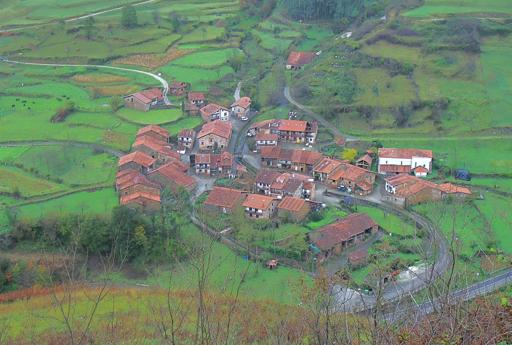
Site of architectural interest of Carmona and San Pedro Neighborhood
Carmona is known as "The flower of the Albarqueros”, artisans who worked with wood making albarcas or "abarcas", typical footwear that allowed to isolate the foot from the humidity of the ground. Declared historic-artistic site, its streets, mansions and the Rubín de Celis Palace are well worth a visit.
Nestled in the Nansa Valley, although administratively it belongs to the City Council of Cabuérniga, Carmona represents the essence of 16th century mountain architecture, XVII y XVIII.
Direction: Carmona
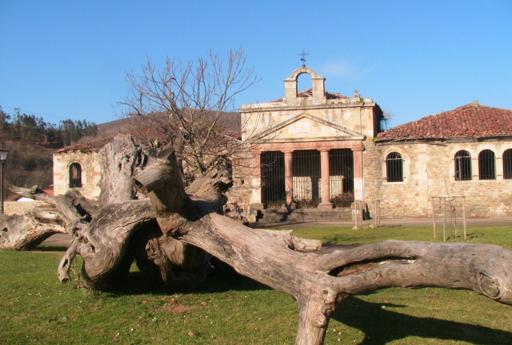
CThe historic complex of Terán with the old schools of the. 19th century, cataloged as an Asset of Cultural Interest and La Castañera
It is one of the few examples of neoclassical architecture in Cantabria. The 18th century church of St. Eulalia also stands out, although its origins date back to the 11th century, framed in the environment of the natural area of "La Castañera", where numerous feet of centennial chestnut trees escorted the monument.
Direction: Terán

Ecomuseum in Valle de Cabuérniga
The “José María de Cos” Ecomuseum is located in a typical mountain mansion from the 18th century, rehabilitated respecting its original architecture. This museum opened in 2008, inside it houses a permanent exhibition center dedicated to agricultural activity, forestry and livestock, with the aim of bringing to the visitor the richness of the ethnographic traditions and cultural heritage of the Cabuérniga Valley area. All this through crafts, customs or its architectural singularities, showcasing the traditional ways of life that helped shape this territory.
Direction: Poblado Valle, 30, 39510 Cabuérniga, Cantabria
telephone: 942 70 60 01

House of Augusto González Linares of the 19th century. in Valle de Cabuérniga
It is the typical mountain house with thick stone walls, but it looks like a tower. It has a square floor plan and is three storeys high., highlighting the balcony of the middle floor.
In it was born in the 19th century the illustrious naturalist (geologist, mineralogist and zoologist) Augusto Gonzalez de Linares.
Direction: Valle de Cabuérniga
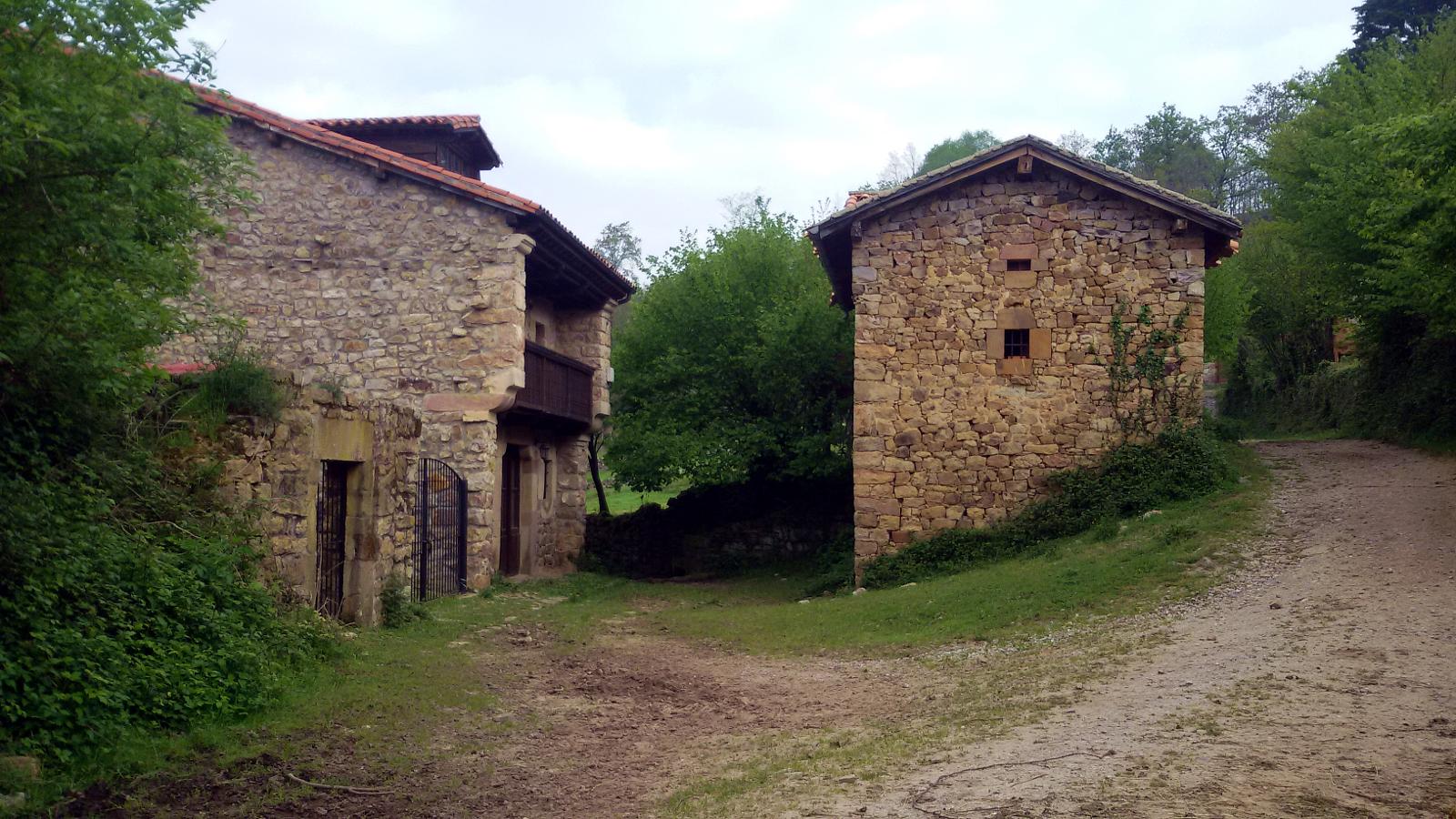
Llendemozó
Located mid-slope, between Renedo and Correpoco, Llendemozó is one of the most unique viewpoints of Cabuérniga, offering us spectacular views of both the valley and the mountains and forests that surround it.
This small uninhabited village, It is made up of barely twenty houses, most of them in ruins, located around the old road that connected Renedo with Correpoco. This path constitutes one of the most important historical paths in the region, Not only, because of its seniority, but also ,for its relationship with the occupation and development of the valley.

Renedo
It is the capital of the municipality with a landscape value and architectural wealth. historical set. (BIL, 2004)
Selores: royal road pass.
The Pas River enters through the W, watering the wide plain, at the same time that it separates him from the town of Vioño, and shortly before entering Quijano it receives the waters of the Carrimont after crossing the entire nucleus. The nucleus appears surrounded by mowing meadows, let's not forget his cattle condition, which are replaced by eucalyptus plantations in the highest areas, reserving only the watercourse areas for rows of oaks, hazelnuts, ash trees…
NATURAL RESOURCES

Coallada de Carmona
mountain pass of 606 meters of altitude, through which the road that goes from Cabuérniga to Puentenansa passes, has splendid panoramic views. It has two viewpoints:
Viewpoint Asomada del Ribero: over the town of Carmona, look towards Puentenansa.
Viewpoint of the Vueltuca: about the town of Valle, look towards Cabuérniga.
Direction: Coallada de Carmona

La Castañera of Terán
It is a green space of enormous landscape and natural value populated by numerous chestnut trees, that appears in the Inventory of Singular Trees of Cantabria as a Singular Ensemble. Altogether there are 31 specimens of living chestnut trees, In addition to several large dry trunks, among which the famous Cuatro Patas stands out for its size.. The Plane and the Pot, both centenarians, are other outstanding specimens.
Direction: Villanueva neighborhood, 20, 39510 Terán, Cantabria

Fondo de Valle
In Terán, of great geomorphological and landscape interest due to the fluvial and torrential action.
Direction: Terán
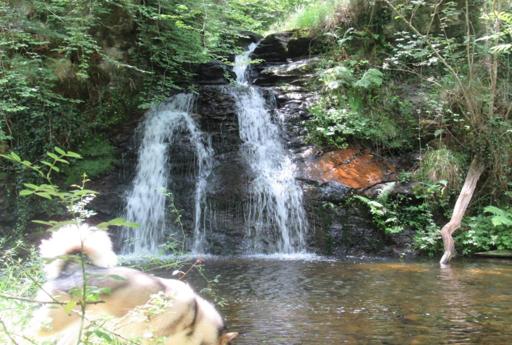
Mount of Viaña
It is a cajigal-beech forest of great extension and dense cover. Once over the forest in height, the dividing ridges offer good panoramic views towards the upper Saja and towards the magnificent cajigales of Ucieda.

Ermite of El Moral
Every Saturday following 15 August is celebrated in Bárcena Mayor and Ucieda the pilgrimage of the "Virgen del Moral". Traditionally, this festival with its deep-rooted popular flavor has been considered as a ritual of integration between neighboring counties., since the hermitage is located in the watershed between the valleys of Iguña and Cabuérniga. The shepherds of both basins come with their cattle adorned with loud bells and songs and dances performed by picayos are celebrated..
Direction: Diseminado Correpoco, 3D, 39518, Cantabria
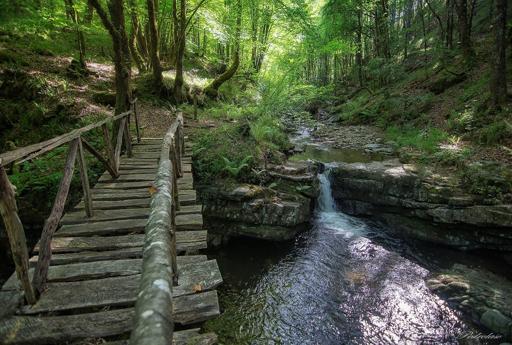
Natural Park Saja Besaya
The Saja-Besaya Natural Park, the largest in Cantabria with its 24.500 has., declared a Site of Community Interest (LIC) of Natural Interest in the Nature Network 2000, and Special Protection Area for Birds (Zepa), It constitutes one of the enclaves with the greatest landscape and ecological value in the region..
Integrated in its entirety within the Saja National Hunting Reserve, the ecosystems of the Park offer grassland areas, from acebedas, of birch trees, of heather and broom, as well as extensive oak and beech forests.
Direction: Cantabria

Saja Besaya Natural Park Interpretation Center
Visitor reception center of the Saja Besaya Natural Park and the Network of Protected Natural Areas of Cantabria. Exposition of the park and guided and interpreted itineraries.
Direction: CA-280 Highway, km 13, 39517 Saja, Los Tojos
telephone: 942 04 94 38